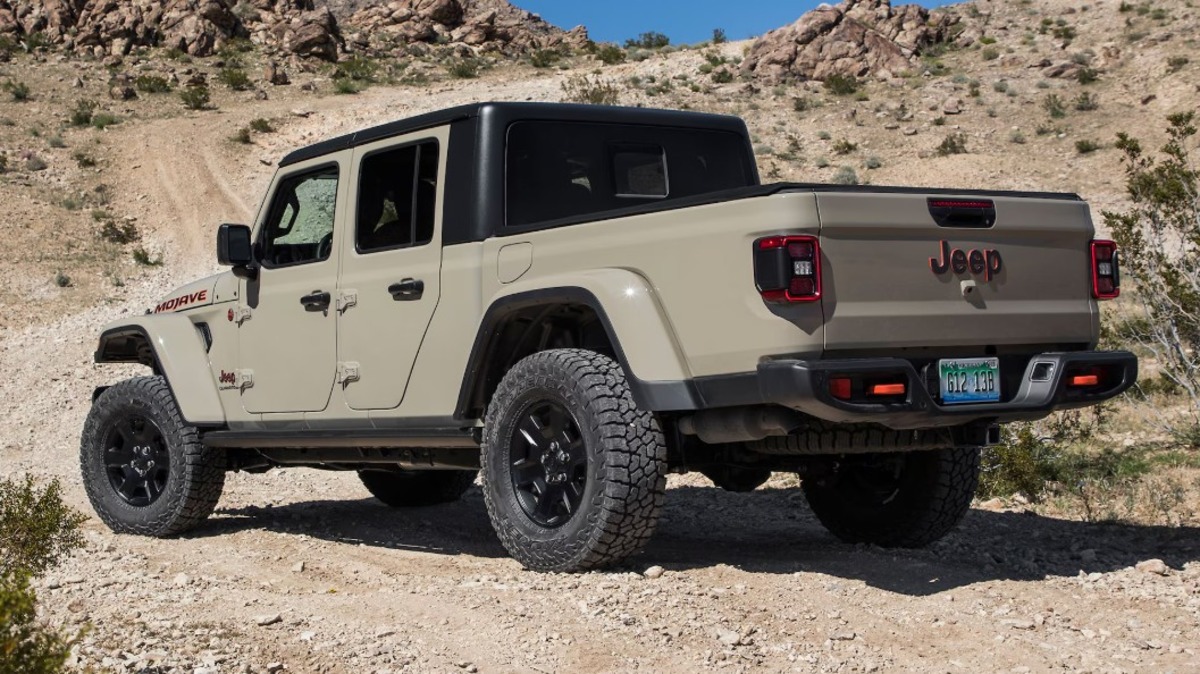Off-roading has evolved from a niche hobby into a mainstream passion, embraced by enthusiasts and professionals alike who demand vehicles that can conquer the most unforgiving terrains.
From rocky mountain trails and muddy forest paths to desert dunes and snow-packed backroads, off-road driving pushes trucks to their limits, testing not only driver skill but also the mechanical strength and durability of the vehicles themselves.
Choosing the right truck for such adventures isn’t merely about horsepower or styling; it’s about engineering resilience, robust construction, advanced drivetrain technology, and the ability to endure relentless punishment without breaking down.
In this context, trucks that survive off-road beatings embody the essence of rugged reliability, while those that snap under pressure reveal the harsh realities of underprepared design.
The off-road truck market today is vast and varied, featuring a wide spectrum of vehicles from heavy-duty, purpose-built beasts to everyday pickups with minimal off-road pretensions.
For many buyers, the distinction between a truck that can handle serious off-road abuse and one that will falter is crucial. Reliability and durability in extreme conditions can mean the difference between an exhilarating adventure and a costly, frustrating ordeal.
Trucks that are built tough off-road come equipped with features like reinforced frames, long-travel suspension, skid plates, locking differentials, and advanced traction management systems. These attributes allow them to tackle obstacles such as rocks, deep mud, steep climbs, and uneven surfaces with confidence and composure.
Conversely, trucks lacking these critical components or those engineered primarily for on-road comfort and efficiency tend to suffer mechanical failures, reduced traction, or structural damage when faced with rigorous off-road challenges.
This article explores the contrasting realities by spotlighting five trucks that survive off-road beatings and five that snap under pressure. The first group represents models celebrated in the off-road community for their toughness, reliability, and trail prowess.
These trucks have proven time and again that they can take significant abuse, keep rolling, and maintain driver confidence even in the harshest environments.
They are equipped with tested and hardened components, optimized suspension systems, and powertrains tuned for off-road torque and control. Whether it’s a classic model with a legendary reputation or a modern truck purpose-built for extreme terrain, these vehicles exemplify the gold standard for off-road durability.
On the other hand, the trucks that snap under pressure reveal a common pattern of weaknesses—aging or insufficient suspension design, lack of proper protective features, underpowered or mismatched drivetrains, and overall fragility in the face of demanding trail conditions.
These models might be excellent performers in urban settings or for light-duty work but fall short when the road ends and the trail begins. Understanding why certain trucks fail under off-road stress provides valuable insights for consumers, helping them avoid potential pitfalls and costly repairs while highlighting the importance of choosing vehicles that match their off-road ambitions.
Beyond mechanical and design considerations, this topic touches on a deeper culture of off-roading that celebrates toughness, ingenuity, and resilience.
Off-road trucks often become an extension of their owners’ personalities—tools for exploration and freedom, symbols of strength and adventure. For those who spend weekends or careers navigating rugged backcountry, reliability isn’t just a convenience—it’s a necessity.
This article serves as both a guide and a cautionary tale, illustrating which trucks are worthy companions on the trail and which ones may falter when the going gets tough.
Whether you’re a seasoned off-roader seeking to upgrade or a novice considering your first truck, these insights will help you make informed decisions that keep you safe, confident, and capable wherever your journeys take you.
Also Read: 5 Cars You Can Abandon for a Year and They Still Start and 5 That Die in a Week
5 Trucks That Survive Off-Road Beatings
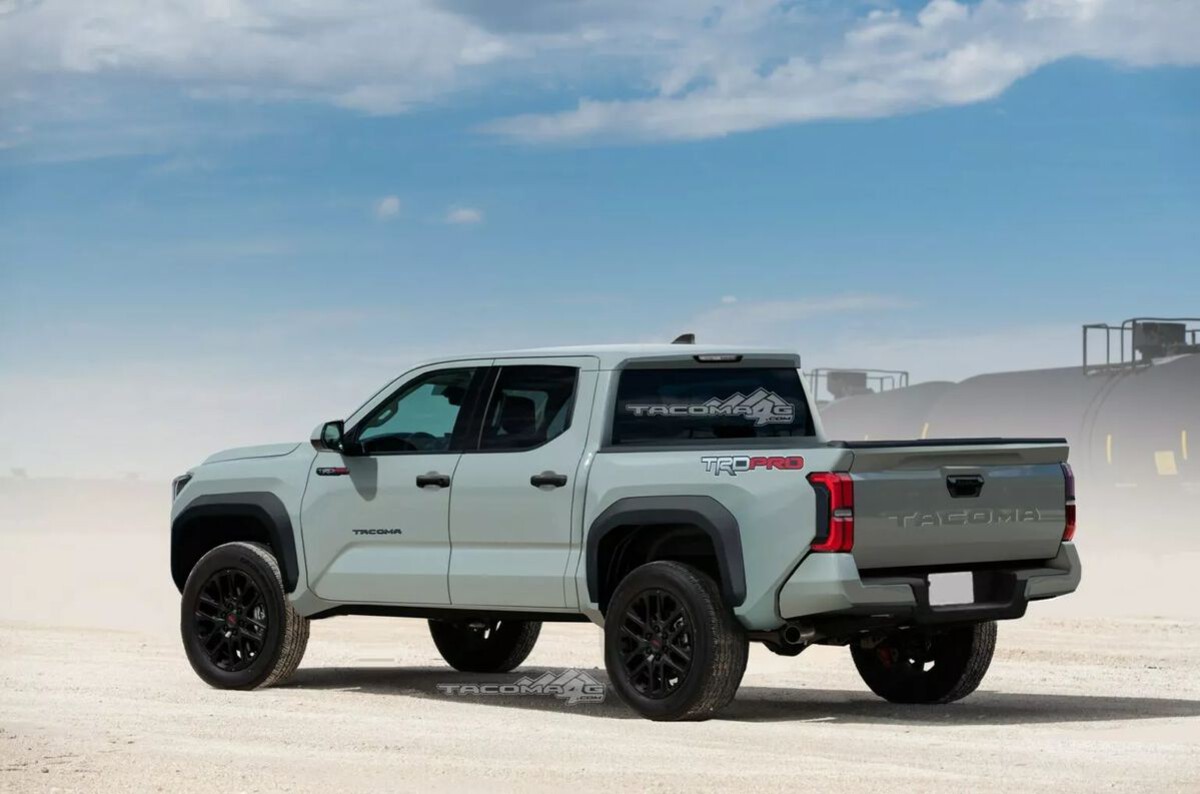
1. Toyota Tacoma TRD Pro
The Toyota Tacoma TRD Pro has earned its legendary status among off-road enthusiasts through decades of consistent, rugged performance paired with Toyota’s renowned engineering reliability. The TRD Pro variant builds on the Tacoma’s already strong midsize truck platform by integrating specific off-road enhancements that ensure it can take serious punishment while maintaining peak functionality.
This truck’s upgraded suspension system features high-performance Fox internal bypass shocks that are specially tuned to absorb impacts from rocky trails, washboard roads, and sudden drops. The increased ground clearance—significantly higher than the standard Tacoma—allows drivers to tackle steep inclines and deep ruts without risking damage to the undercarriage.
Additionally, protective skid plates cover critical components like the transfer case, front differential, and fuel tank, safeguarding the truck from sharp rocks and debris that could otherwise lead to costly repairs. These engineering details combine to create a vehicle that can navigate the toughest trails with confidence and durability.
Under the hood, the Tacoma TRD Pro houses a 3.5-liter V6 engine that produces a strong and dependable output, typically around 278 horsepower and 265 lb-ft of torque. While not the most powerful engine in its class, its smooth power delivery and low-end torque make it ideal for crawling over obstacles or powering through deep mud.
Paired with a six-speed automatic transmission and an electronically controlled transfer case, the TRD Pro offers sophisticated control over torque distribution, especially when coupled with its locking rear differential. The addition of Crawl Control—a feature that automatically modulates throttle and brakes—further enhances the truck’s ability to maintain steady traction on challenging surfaces without constant driver input.
Together, these systems create an off-road experience that emphasizes control, resilience, and adaptability, allowing the Tacoma to survive extreme conditions that would easily cripple lesser trucks.
The Tacoma TRD Pro’s balance between off-road prowess and daily drivability sets it apart from many dedicated trail rigs that sacrifice comfort for capability. Despite its rugged suspension and aggressive tires, the Tacoma still delivers a relatively smooth ride on highways and city streets.
The interior is well-appointed with modern infotainment, comfortable seating, and advanced safety features, making it a practical choice for drivers who want a versatile vehicle capable of excelling both on and off the pavement.
Many owners report the Tacoma’s durability over thousands of miles of grueling off-road use, with minimal mechanical issues even under harsh conditions. This dual capability means the Tacoma doesn’t just survive off-road beatings—it continues to serve as a reliable daily driver and weekend warrior without compromise.
Another significant advantage of the Tacoma TRD Pro is the massive aftermarket ecosystem that supports it. Whether you need upgraded armor, lift kits, performance tuners, or specialized tires, there’s an abundance of parts and accessories tailored specifically to enhance the Tacoma’s off-road capabilities.
This level of customization allows owners to modify their trucks for specific environments, from desert dunes to rocky mountain trails. Additionally, Toyota’s widespread service network and reputation for long-term reliability mean that sourcing replacement parts and maintaining the vehicle are relatively straightforward, even in remote areas.
This combination of factory durability, practical design, and aftermarket versatility makes the Tacoma TRD Pro an icon in the off-road community and a truck that repeatedly proves it can survive intense off-road beatings.
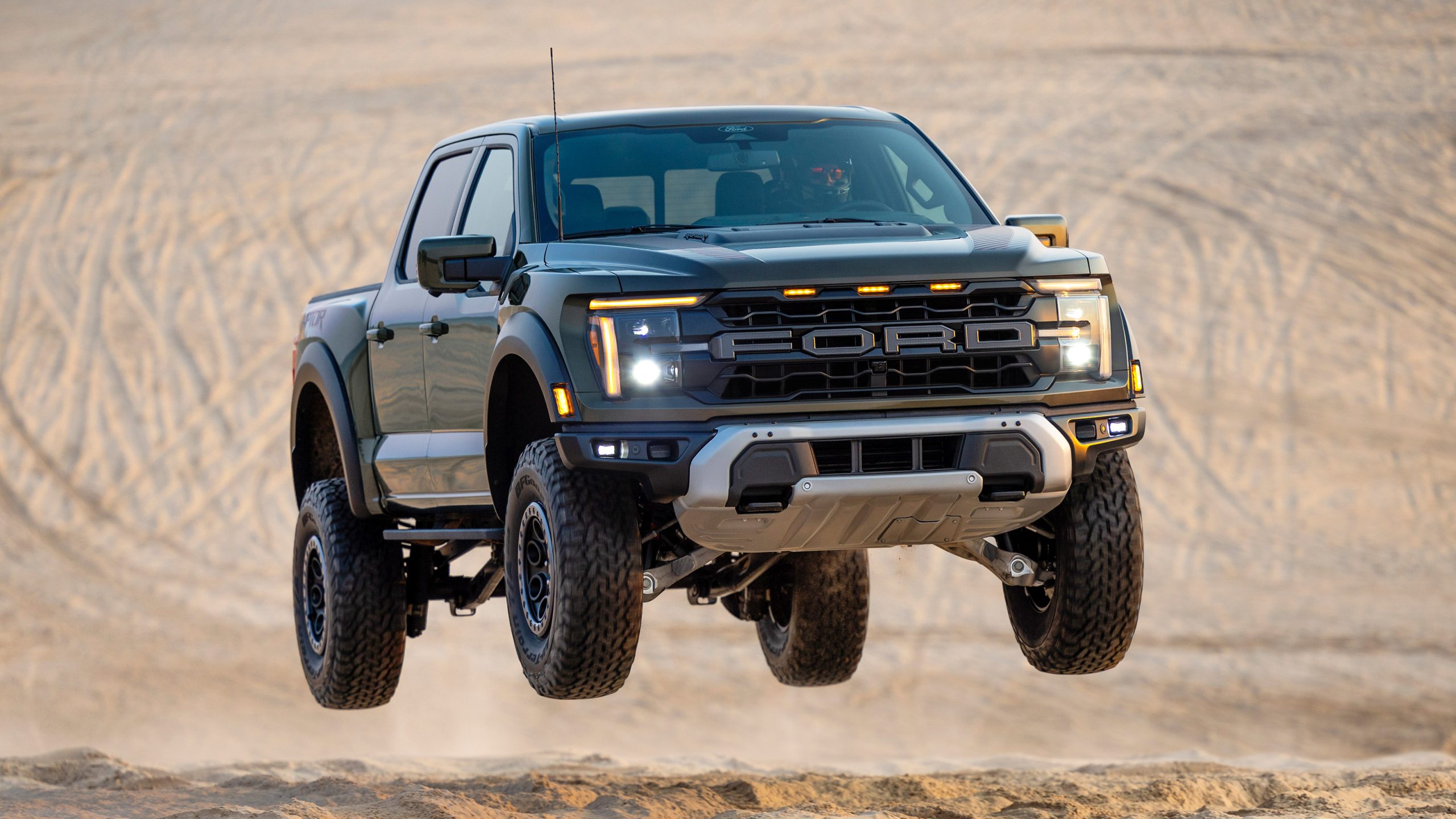
2. Ford F-150 Raptor
The Ford F-150 Raptor is not just another trim level; it’s a complete reimagining of the venerable F-150 platform designed expressly for the harshest off-road environments. From its wider stance to its reinforced frame and massive suspension travel, the Raptor is built to endure and excel where other trucks falter.
Its suspension system is one of the most sophisticated in the pickup market, featuring Fox Live Valve shocks with electronically controlled damping that adjust in real-time based on terrain and speed. This system allows the Raptor to absorb the severe impacts of high-speed desert runs, sudden drops, and rock gardens with ease, preserving both ride comfort and vehicle integrity.
Its independent front suspension design further improves articulation and wheel contact on uneven surfaces, enhancing traction and stability in the most challenging off-road conditions.
Powering this beast is a 3.5-liter twin-turbocharged EcoBoost V6 engine delivering a potent combination of approximately 450 horsepower and 510 lb-ft of torque. This high-output powertrain allows the Raptor to sprint across open desert terrain or conquer steep inclines with remarkable ease.
The turbocharged design also helps maintain torque at low RPMs, crucial for crawling over rocks or maneuvering through mud. Complementing the engine is a heavy-duty 10-speed automatic transmission that provides smooth power delivery and quick gear shifts, ensuring the truck can respond instantly to the driver’s inputs during off-road maneuvers.
The Raptor’s four-wheel-drive system, coupled with a Terrain Management System offering multiple drive modes—including Baja, Mud/Sand, and Rock Crawl—lets drivers tailor traction and throttle response to the exact environment, maximizing grip and minimizing wheel slip.
Beyond power and suspension, the Raptor’s durability is enhanced by an array of off-road protective features. Steel skid plates shield the underbody, while rock sliders prevent damage to the rocker panels. The frame itself is reinforced to withstand the repeated stress and flexing encountered in rough terrain, which prevents structural fatigue over time.
Furthermore, the Raptor’s massive tires, typically 35 inches in diameter, provide significant ground clearance and improved traction, while the wide track width increases stability during high-speed cornering or obstacle negotiation. This combination of power, protection, and precise engineering means that the Raptor doesn’t just endure off-road abuse—it dominates it.
Finally, the Ford Raptor’s popularity is supported by a strong enthusiast community and extensive aftermarket support, offering everything from suspension upgrades to custom bumpers and performance tuners. Despite its aggressive nature, the Raptor remains surprisingly comfortable and technologically advanced inside, featuring a modern cabin with driver-assistance features and infotainment options.
This combination makes it one of the most well-rounded trucks available for those who demand off-road survivability without sacrificing everyday usability. Its proven resilience and high-performance capabilities make it a benchmark for off-road trucks that can withstand the harshest beatings while maintaining composure.
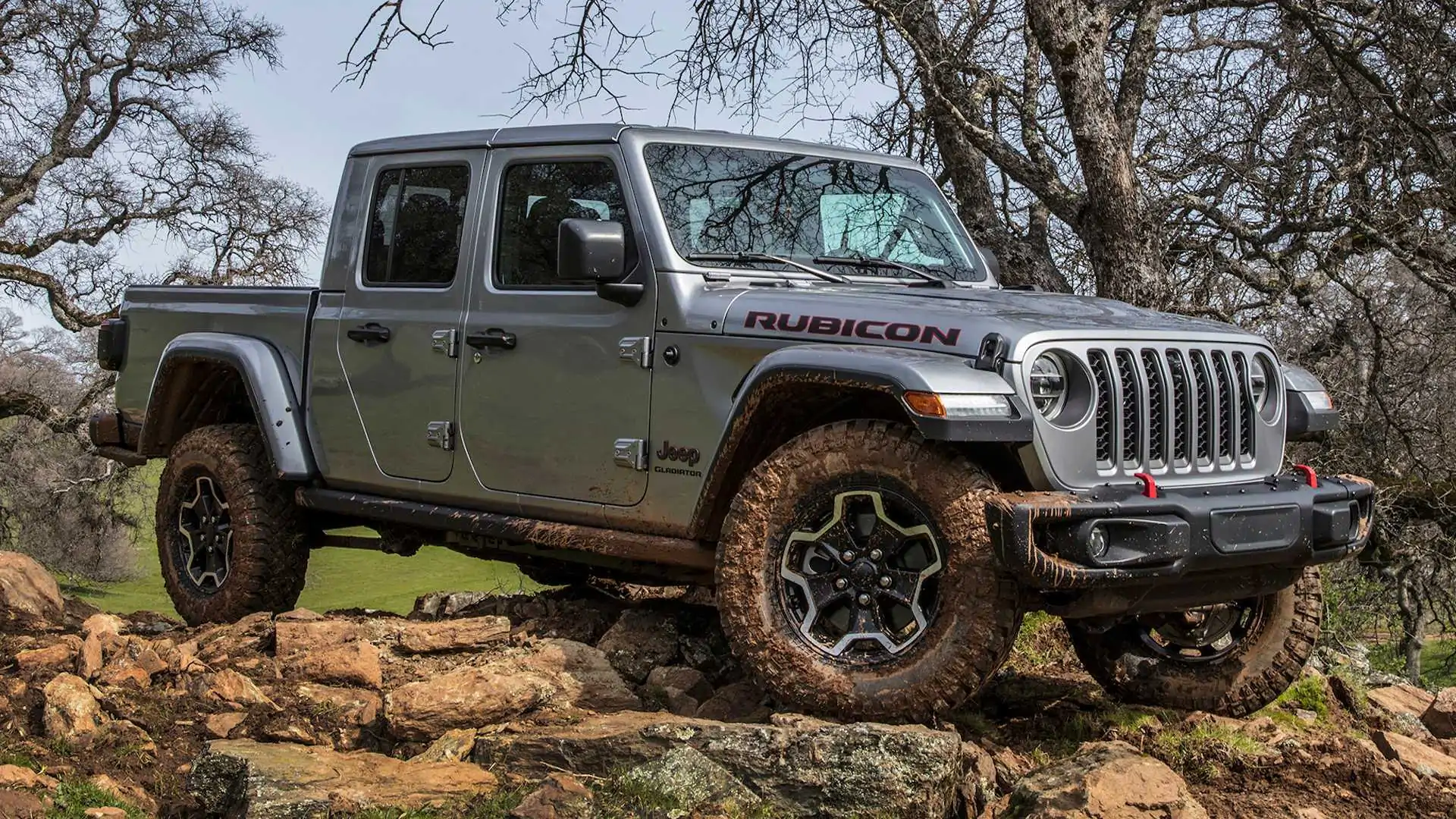
3. Jeep Gladiator Rubicon
The Jeep Gladiator Rubicon represents the perfect marriage between Jeep’s legendary off-road heritage and the practicality of a midsize pickup truck. Taking cues from the iconic Wrangler platform, the Gladiator Rubicon incorporates proven off-road technologies such as solid front and rear axles, electronic locking differentials, and a disconnecting front sway bar that dramatically increases wheel articulation.
This setup allows the Gladiator to maintain tire contact with uneven terrain, ensuring superior traction and stability when crawling over rocks, logs, or deep ruts. The body-on-frame construction provides rugged durability, designed to resist twisting and flexing under extreme off-road loads, which protects the vehicle’s mechanical components and enhances its lifespan.
Underneath the hood, the Gladiator Rubicon typically comes with a 3.6-liter Pentastar V6 engine that produces a respectable 285 horsepower and 260 lb-ft of torque. While not the most powerful engine in the segment, its reliability and torque curve are well-suited for off-road applications, delivering steady power during low-speed technical maneuvers and uphill climbs.
The availability of a six-speed manual transmission further appeals to enthusiasts who want precise control over power delivery. Complementing the drivetrain are heavy-duty Dana 44 axles front and rear, designed to handle extreme torque loads and harsh terrain impacts without failure.
These axles are coupled with a Rock-Trac 4×4 system that includes a 4:1 low-range gear ratio, enabling the Gladiator to crawl over obstacles with remarkable ease.
In terms of protection, the Gladiator Rubicon comes with underbody skid plates that guard the fuel tank, transfer case, and oil pan, critical areas that are vulnerable to damage during aggressive off-roading. Rock rails provide additional protection to the lower body panels from impacts with boulders and tree stumps.
Jeep’s long history of off-road innovation shines through in the Gladiator’s design, which balances durability, functionality, and the ability to be modified easily with aftermarket parts. This versatility means that the Gladiator Rubicon can be adapted for a wide range of off-road environments, from desert dunes to tight forest trails.
Owners of the Gladiator Rubicon frequently praise its ability to take repeated off-road beatings without succumbing to mechanical failures or body damage. Its robust build and proven components make it one of the few trucks that maintain Jeep’s reputation for rugged reliability while offering the utility of a pickup bed.
Whether it’s tackling rock crawling challenges, fording streams, or hauling gear over rough trails, the Gladiator Rubicon continues to prove it can survive the most demanding off-road scenarios.
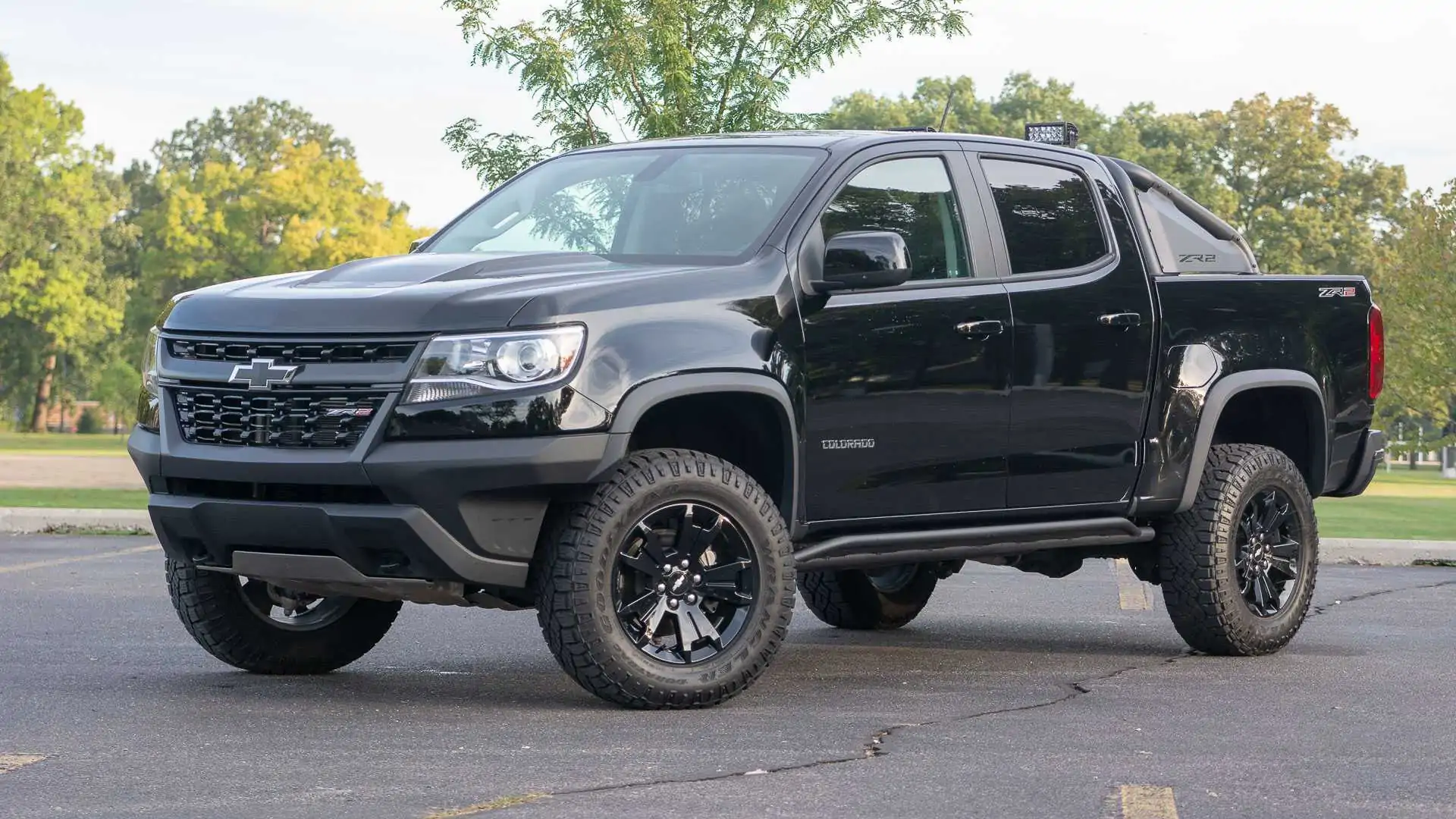
4. Chevrolet Colorado ZR2
The Chevrolet Colorado ZR2 is a midsize truck engineered to punch well above its weight class in terms of off-road capability and durability. Its standout feature is the inclusion of Multimatic DSSV (Dynamic Suspension Spool Valve) dampers—technology borrowed from high-performance racing cars—that provide exceptional control over wheel movement and shock absorption.
This suspension setup allows the Colorado ZR2 to maintain tire contact on extremely uneven terrain, reduce body roll, and absorb impacts from rocks and potholes more effectively than conventional shocks. The truck’s lifted suspension and wider track give it increased ground clearance and stability, essential attributes for traversing rugged trails with confidence and precision.
Powertrain options on the ZR2 include a naturally aspirated 3.6-liter V6 and an available 2.8-liter Duramax diesel engine. The diesel variant, in particular, is prized for its high torque output and fuel efficiency, delivering strong low-end pulling power that helps the truck navigate steep inclines and deep mud.
This versatility in engine choice allows owners to tailor their trucks for different off-road demands and fuel economy preferences. The Colorado ZR2 also features front and rear electronic locking differentials, which significantly improve traction by ensuring power is distributed evenly to wheels that have grip, reducing wheel spin and helping the truck maintain momentum in slippery or loose conditions.
The ZR2’s ruggedness is further enhanced by comprehensive underbody protection, including skid plates that guard the transfer case, oil pan, and fuel tank from impacts. Its aggressive off-road tires and wider fender flares prevent debris and mud from damaging the body while maximizing grip.
The truck’s relatively compact size compared to full-size pickups allows for easier maneuvering through tight trails and dense woods, while its robust build ensures it can endure sustained off-road abuse without mechanical failure.
Users often highlight the Colorado ZR2’s blend of agility, power, and durability, which enables it to survive extended off-road excursions with minimal downtime. Its race-proven suspension components and thoughtful engineering make it a standout choice for off-roaders seeking a midsize truck that can withstand harsh terrain and keep pushing forward when others might break.
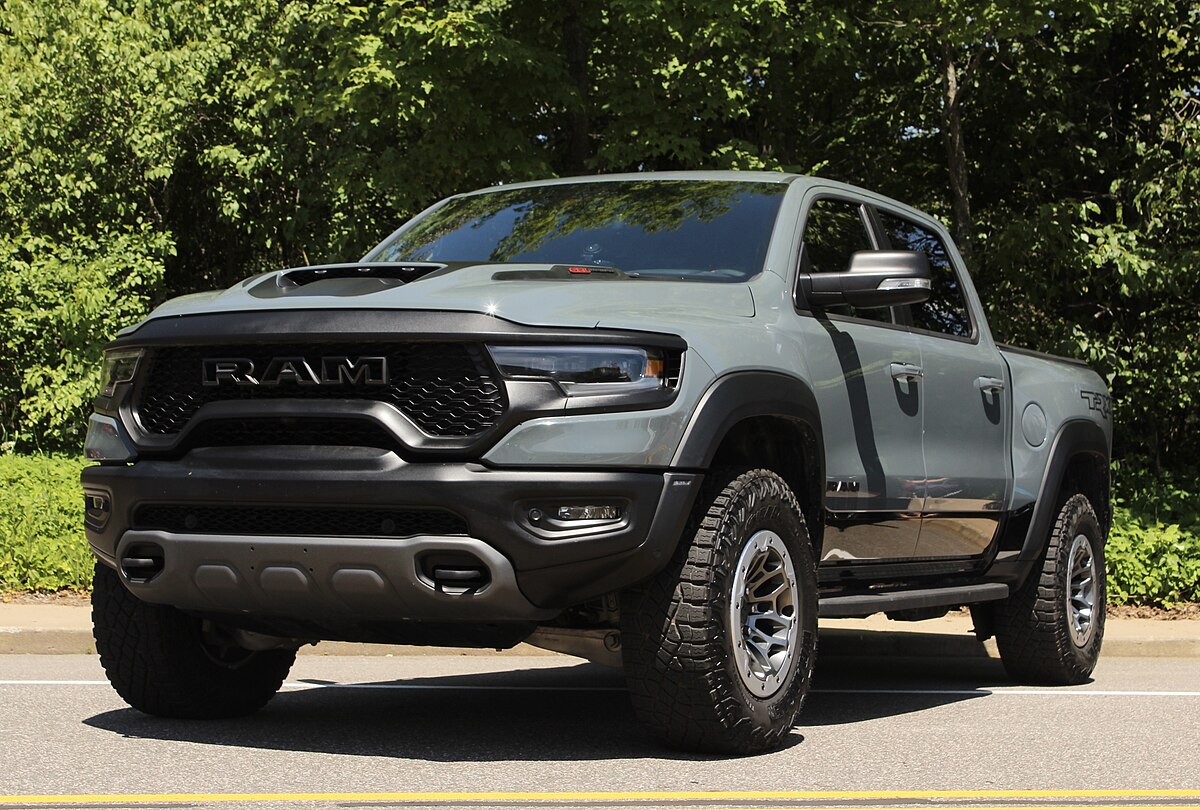
5. RAM 1500 TRX
The RAM 1500 TRX is a true game-changer in the full-size off-road truck category, combining brute force, advanced engineering, and a no-compromise attitude towards durability. At its core is the supercharged 6.2-liter HEMI Hellcat V8 engine, which produces an earth-shaking 702 horsepower and 650 lb-ft of torque.
This immense power allows the TRX to accelerate quickly over any terrain, whether launching off desert jumps or powering through thick mud. The truck’s chassis is heavily reinforced, with a frame and suspension designed to handle the immense stresses generated by high-speed off-road driving and aggressive trail assaults.
The TRX is equipped with Bilstein Black Hawk e2 adaptive shocks, which feature a twin-tube design and remote reservoirs to provide superior heat dissipation and consistent damping performance under extreme conditions.
This advanced suspension system enables the TRX to absorb massive impacts from off-road jumps and rough trails while maintaining excellent control and ride quality.
Its four-wheel-drive system is paired with a sophisticated terrain management system offering multiple modes—including Rock, Sand, Mud/Snow, and Baja—to optimize traction and throttle response for varying environments. The truck’s wide stance and large 35-inch tires increase ground clearance and stability, allowing it to dominate challenging terrain without sacrificing safety or comfort.
The TRX’s ruggedness extends beyond its powertrain and suspension. It features extensive underbody protection with skid plates covering critical components like the transfer case, fuel tank, and oil pan. Heavy-duty rock rails shield the lower sides of the truck from impacts with obstacles.
The drivetrain components, including axles and driveshafts, are beefed up to handle the torque and shocks produced by extreme off-road use. This comprehensive approach to durability ensures that the TRX can withstand punishing trail conditions day after day without succumbing to mechanical failures or structural damage.
Beyond its mechanical prowess, the TRX offers a plush, tech-laden interior that defies expectations for an off-road beast. Features like adaptive cruise control, a premium infotainment system, and advanced safety technologies make it a versatile truck suitable for both extreme adventure and daily driving.
The RAM 1500 TRX’s blend of monstrous power, sophisticated engineering, and rugged durability solidifies its place as one of the few trucks that can truly survive—and dominate—the harshest off-road beatings.
5 Trucks That Snap Under Pressure
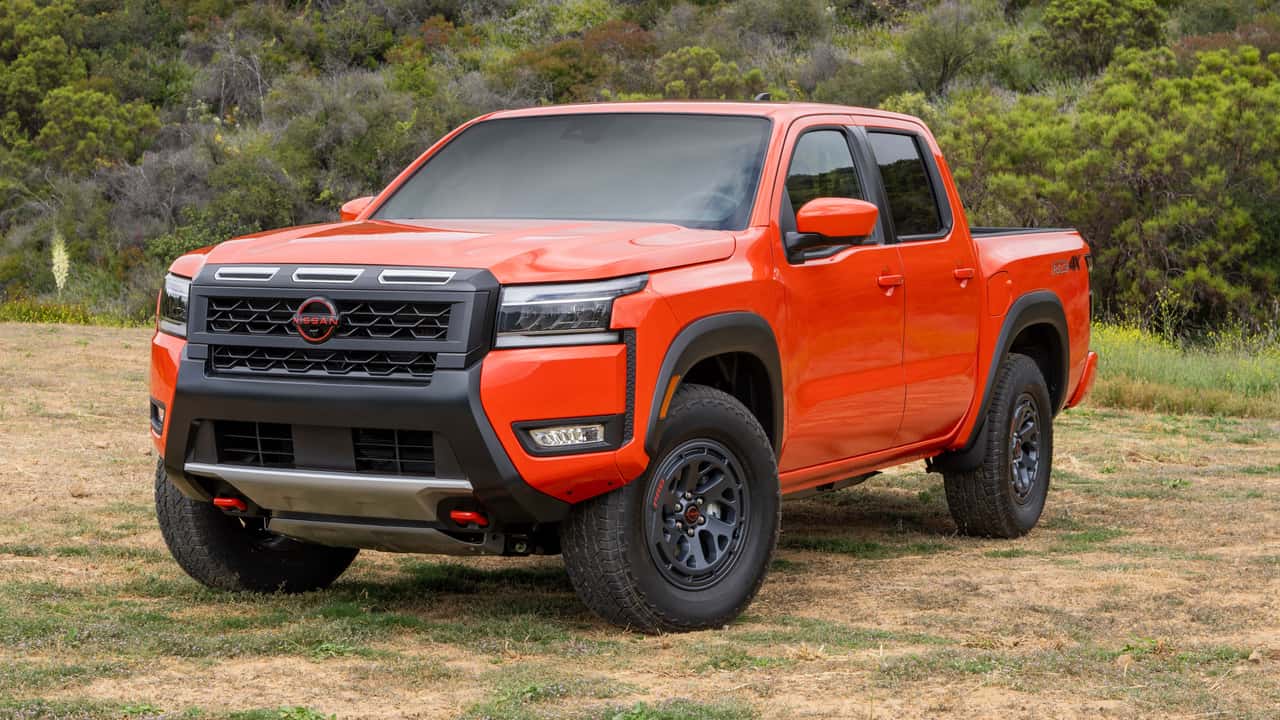
1. Nissan Frontier
The Nissan Frontier has long been a staple in the midsize truck segment, known for its affordability and straightforward design, but it unfortunately falls short when pushed hard in serious off-road situations.
While the Frontier is marketed with some off-road trims like the Pro-4X, its fundamental engineering roots trace back many years, with a platform that has not evolved significantly to keep pace with competitors’ advancements in durability and capability.
One of the biggest issues with the Frontier is its aging suspension setup, which lacks the sophistication needed to absorb heavy impacts on rough terrain. The rear leaf springs, common in older truck designs, provide a harsh ride and limited articulation, reducing wheel contact on uneven surfaces and increasing the chance of getting stuck or damaging undercarriage components.
This older suspension technology, coupled with a relatively low ground clearance compared to newer rivals, makes the Frontier vulnerable to scrapes, dents, and more serious damage when traversing rocky trails or deep ruts.
Under the hood, the Frontier is often equipped with a 3.8-liter V6 engine that generates decent horsepower but offers only average torque for off-road applications. Torque is critical for crawling over obstacles and powering through mud or sand, and the Frontier’s powertrain tends to lack the low-end grunt required for these maneuvers.
Additionally, the available transmission options—mainly a 9-speed automatic—sometimes exhibit slow or hesitant shifts under heavy load, especially during low-speed, high-torque off-roading scenarios. This can cause unnecessary strain on drivetrain components, which are not heavily reinforced for intense off-road abuse.
The Frontier’s four-wheel-drive system, while functional, does not include advanced traction management features found in more capable trucks, limiting its ability to dynamically respond to changing terrain and maintain grip in challenging conditions. This lack of refinement in both suspension and drivetrain results in increased mechanical stress and premature wear.
When pushed off-road, the Nissan Frontier’s build quality and component strength can’t always keep up with the harsh environment. Owners and off-road enthusiasts frequently report issues like suspension components bending or breaking, frame flex leading to misalignments, and underbody parts scraping or cracking on sharp rocks.
The truck’s protective measures are minimal, with limited skid plating and no heavy-duty rock sliders as standard equipment, leaving critical systems like the transfer case and fuel tank exposed to damage. This absence of robust armor is a glaring weakness for a vehicle intended for rugged use.
Furthermore, its older design lacks the modularity for easy aftermarket upgrades, limiting owners’ ability to reinforce or customize their trucks to survive tougher trails.
In essence, the Frontier’s underdeveloped off-road hardware means it often snaps under pressure when faced with demanding terrain, compromising safety and leaving drivers stranded or forced to undertake costly repairs.
Beyond mechanical vulnerabilities, the Frontier also struggles with reliability concerns after repeated off-road use. Unlike some competitors that boast proven long-term durability, the Frontier’s components—especially suspension bushings, ball joints, and drivetrain seals—are prone to premature wear and failure when exposed to dirt, water, and the intense vibration of rough trails.
This can lead to frequent trips to the mechanic, increased downtime, and escalating maintenance costs. Combined with its less refined handling and reduced traction control options, these factors make the Nissan Frontier a truck that struggles to maintain composure and operational integrity when off-road demands intensify.
For drivers seeking a vehicle that can truly endure harsh trail conditions and keep going without breaking down, the Frontier unfortunately ranks low, snapping under pressure far more readily than its more robust peers.
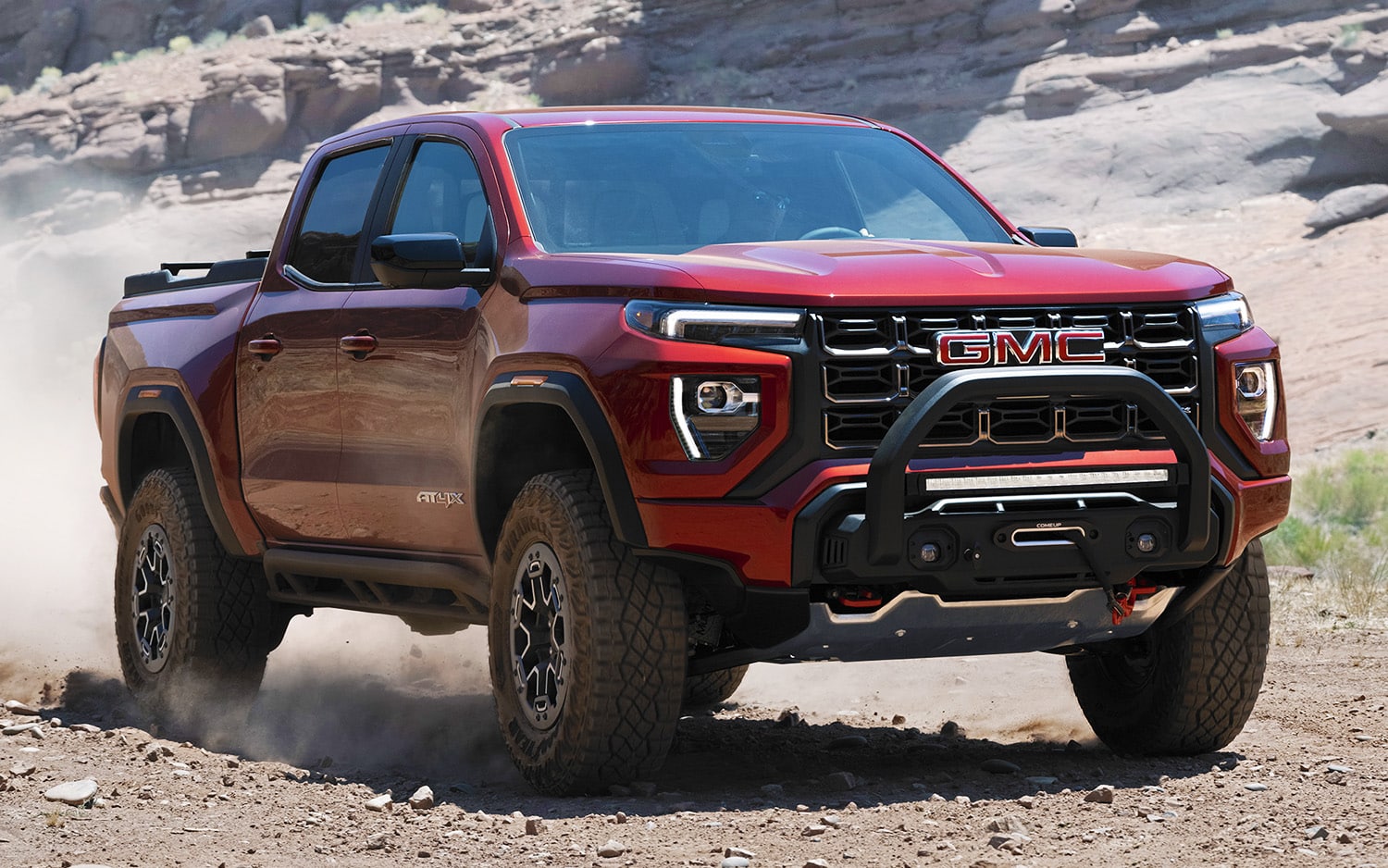
2. GMC Canyon
The GMC Canyon, positioned as a premium midsize truck with upscale interior features, unfortunately, does not match its polished aesthetics with uncompromising off-road durability.
Despite sharing a platform with the Chevrolet Colorado ZR2, the Canyon itself lacks some of the ZR2’s advanced off-road hardware, which significantly undermines its ability to survive harsh trail conditions.
Its suspension system, although adequate for everyday driving and light off-road use, isn’t optimized for heavy impacts or extreme articulation. The Canyon generally employs a conventional coil-spring front suspension and leaf springs in the rear that offer limited travel and poor shock absorption when subjected to rough terrain.
This setup increases the risk of bottoming out on rocks or roots and reduces wheel contact with uneven surfaces, causing traction issues and making it easier for the truck to get stuck or lose control on challenging trails. The suspension components are also not as heavily reinforced as those found on purpose-built off-road trucks, making them more susceptible to bending, cracking, or premature wear under severe use.
Powertrain options in the GMC Canyon vary, but most models are equipped with a 2.5-liter four-cylinder or a 3.6-liter V6 engine, both of which provide moderate horsepower but only modest torque output. Torque is essential for low-speed climbing and traction in slippery or uneven conditions, and the Canyon’s engines do not deliver the robust torque curves that more off-road-oriented trucks provide.
Its six-speed automatic transmission, while smooth and reliable on paved roads, can be overwhelmed under intense off-road conditions, resulting in sluggish throttle response and putting excessive strain on the drivetrain components.
Unlike some trucks that feature advanced terrain management systems or locking differentials, the Canyon’s off-road capabilities are more limited, especially in models that don’t come with the AT4 off-road package.
Even when equipped with four-wheel drive, the lack of sophisticated traction aids makes it difficult for the Canyon to adapt to rapidly changing terrain, further exposing its weaknesses.
Durability is a critical weak point for the GMC Canyon when subjected to intense off-road conditions. The truck’s underbody protection is minimal, lacking extensive skid plates to protect vulnerable components like the fuel tank and transfer case. This makes the truck prone to damage from sharp rocks and debris encountered on rugged trails.
The chassis, while designed for general utility, is not heavily reinforced to handle the torsional stresses imposed by uneven terrain, leading to potential frame flex or damage after repeated impacts.
Off-road enthusiasts often report problems with suspension bushings and ball joints wearing out prematurely, as well as instances of CV joint and axle shaft failures due to the increased mechanical stress during off-road excursions. These issues compound over time, reducing the truck’s overall reliability and increasing maintenance costs.
In real-world off-road scenarios, the GMC Canyon can quickly reach its limits, leading to mechanical failures or getting stuck in tricky conditions. Drivers frequently cite the truck’s inability to maintain traction on loose or uneven surfaces and the lack of specialized off-road equipment as major factors that cause it to snap under pressure.
While the Canyon excels as a comfortable and stylish truck for light-duty use and occasional dirt roads, its shortcomings become glaringly apparent during serious off-road adventures, where the combination of underwhelming suspension, moderate powertrain, and limited durability contributes to frequent breakdowns and frustration.
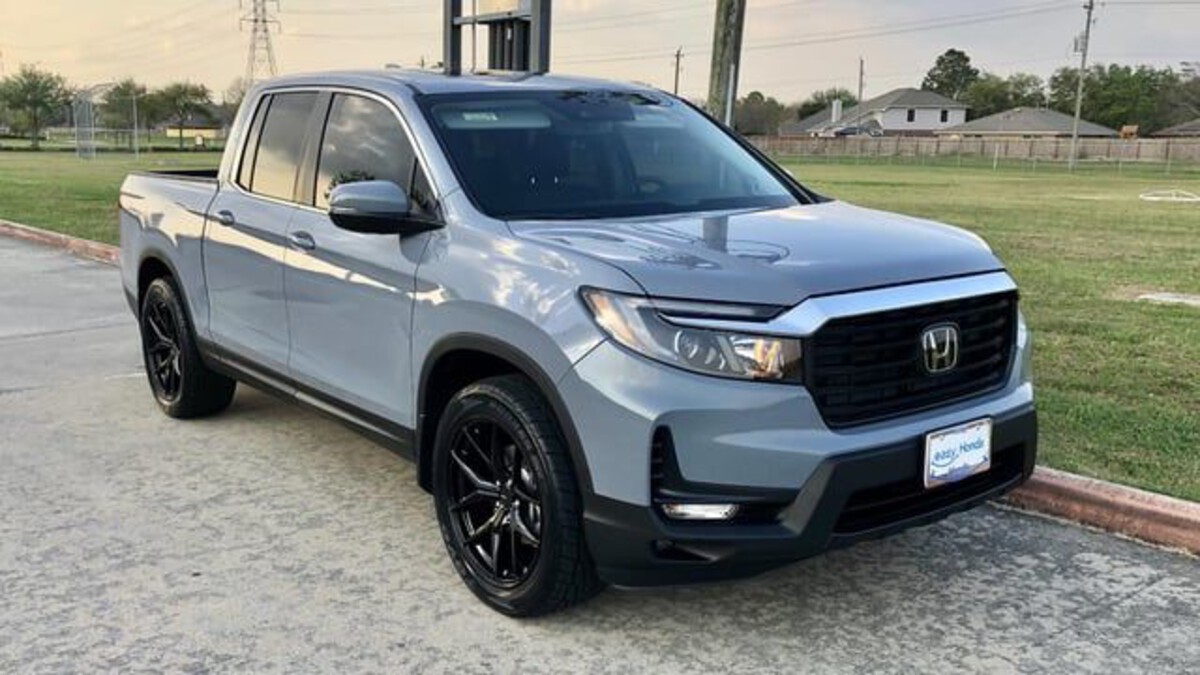
3. Honda Ridgeline
The Honda Ridgeline is a unique entrant in the pickup truck market, offering a unibody construction rather than the traditional body-on-frame design found in most trucks.
While this engineering approach provides a smooth ride, excellent on-road handling, and improved fuel efficiency, it significantly limits the Ridgeline’s ability to withstand harsh off-road conditions and heavy-duty impacts.
The unibody structure lacks the rigid frame that typically helps trucks endure torsional flexing and repeated stress on rough terrain. As a result, the Ridgeline can suffer from structural fatigue or damage more easily when pushed beyond mild off-road use.
Its suspension system, based on a fully independent setup with MacPherson struts in the front and a multi-link rear, is tuned more for comfort and stability than for rugged durability. This leads to limited ground clearance, reduced wheel articulation, and a softer undercarriage that can easily scrape or suffer damage on rocks, logs, or deep ruts.
The Ridgeline is powered by a 3.5-liter V6 engine that delivers solid horsepower and torque for highway driving and light towing but lacks the specialized low-end torque delivery that serious off-road conditions demand. Its six-speed automatic transmission shifts smoothly but does not feature dedicated off-road programming or terrain management systems.
The all-wheel-drive system, while effective on wet or snowy pavement, is not designed for intense off-road use, lacking locking differentials or crawl control that are standard in more capable trucks.
This means the Ridgeline struggles to maintain traction on loose, muddy, or uneven surfaces, and drivers can quickly find themselves stuck or losing momentum in more technical off-road environments. The drivetrain components are also not built with the heavy-duty reinforcements seen in traditional off-road trucks, leaving them vulnerable to premature wear or failure under extreme stress.
Protection from underbody damage is another area where the Ridgeline falls short. Without extensive skid plates or rock sliders, the truck’s lower body and mechanical components are exposed to scrapes, dents, and punctures from sharp objects commonly found on off-road trails. Its relatively low ground clearance further exacerbates this vulnerability.
The Ridgeline’s tires, typically sized for on-road comfort rather than off-road grip, limit traction and increase the risk of punctures or sidewall damage when navigating thorny brush or rocky terrain. Over time, repeated off-road exposure can lead to accelerated wear on suspension bushings, CV joints, and other critical components, resulting in costly repairs and increased downtime.
Overall, while the Honda Ridgeline is a practical and reliable truck for urban driving, light hauling, and occasional dirt roads, it is fundamentally ill-equipped to endure serious off-road beatings. Its construction, powertrain, and limited off-road features make it prone to snapping under pressure when faced with tough trails, deep mud, or rocky landscapes.
Enthusiasts looking for a truck to take on demanding off-road adventures often find the Ridgeline’s capabilities insufficient and its durability lacking, relegating it to mild off-road use at best.
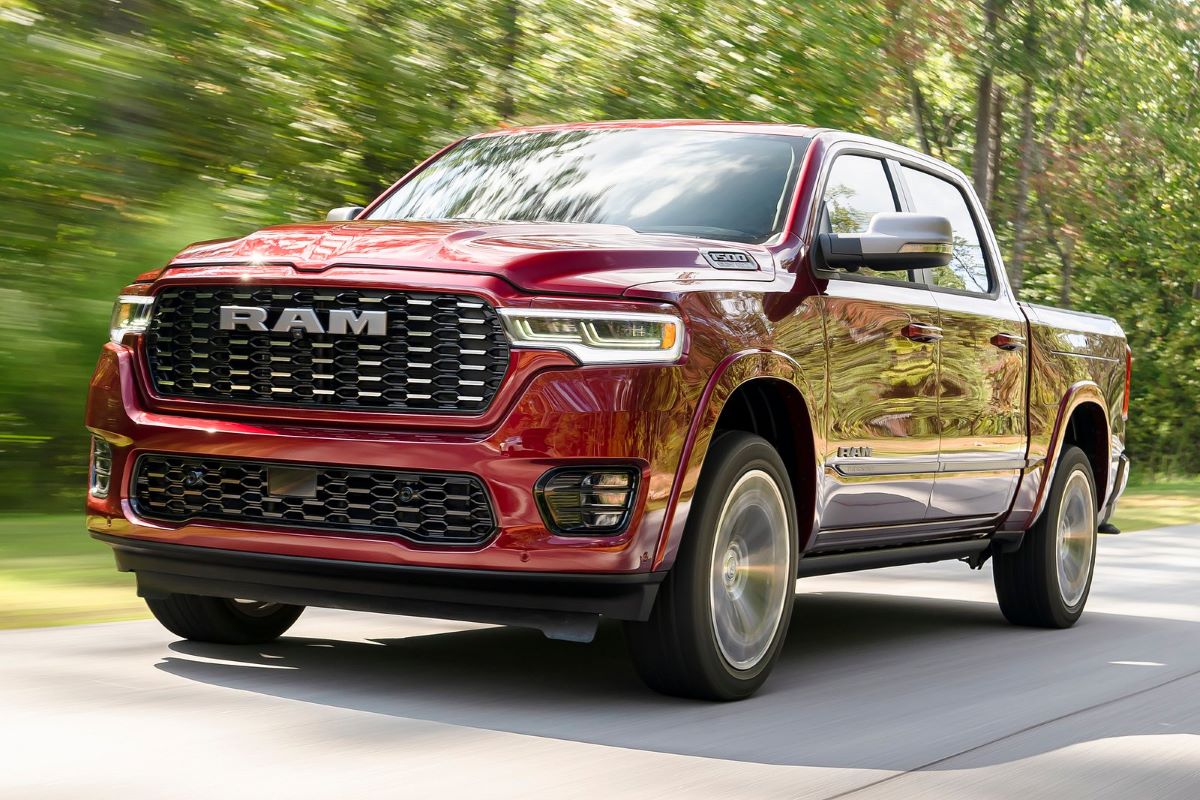
4. Ram 1500 (Standard Model)
The standard Ram 1500, while praised for its comfortable ride and luxurious interior, often disappoints when subjected to serious off-road abuse due to several key design and engineering limitations. Unlike the TRX variant, the base Ram 1500 is built primarily for on-road comfort and light-duty work rather than hardcore trail running.
Its suspension, though smooth and composed on highways, lacks the heavy-duty components and extensive travel necessary to absorb large impacts or maintain traction on uneven terrain. The coil spring front suspension and multi-link rear setup are not reinforced for sustained off-road use, and the truck’s ground clearance is often insufficient to avoid damage from rocks or deep ruts.
Without specialized off-road tuning or heavy-duty shock absorbers, the Ram 1500’s chassis and suspension components are prone to bending or breaking under the repeated stress of rough trails.
Powertrain options on the standard Ram 1500 include a range of V6 and V8 engines that provide ample horsepower and torque for towing and hauling, but are not optimized for low-speed crawling or extreme off-road scenarios.
The truck’s transmission and transfer case also lack advanced off-road features like crawl control or multiple terrain modes, limiting the driver’s ability to modulate power and traction on tricky surfaces.
This deficiency results in increased wheel spin, traction loss, and mechanical strain during demanding off-road maneuvers. Additionally, many Ram 1500 models do not come equipped with locking differentials or heavy-duty skid plates as standard, leaving vital components exposed to damage.
This lack of factory-installed protection and traction aids makes the truck vulnerable to underbody impacts and drivetrain failures in challenging environments.
Durability concerns frequently arise with the standard Ram 1500 after extensive off-road use. Components such as suspension bushings, control arms, and drivetrain mounts have been reported to wear prematurely or fail due to the increased vibrations, impacts, and stresses experienced off-road. The frame, though strong enough for typical use, can exhibit fatigue when flexed repeatedly over rough terrain.
Without reinforced rock rails or skid plates, the truck’s body panels and undercarriage are susceptible to dents and punctures from rocks, tree limbs, and other trail hazards. These vulnerabilities often translate to costly repairs and decreased reliability, discouraging owners from pushing their Ram 1500 beyond moderate off-road excursions.
In practical terms, the standard Ram 1500 snaps under pressure because it is simply not engineered for the rigors of hardcore off-roading. Its combination of comfort-focused suspension, limited protective features, and a powertrain lacking off-road optimizations makes it prone to mechanical failures, reduced traction, and structural damage on tough trails.
For those seeking a truck to survive serious off-road beatings, the base Ram 1500 falls short and requires significant aftermarket modifications to even approach the durability levels offered by purpose-built off-road trucks.
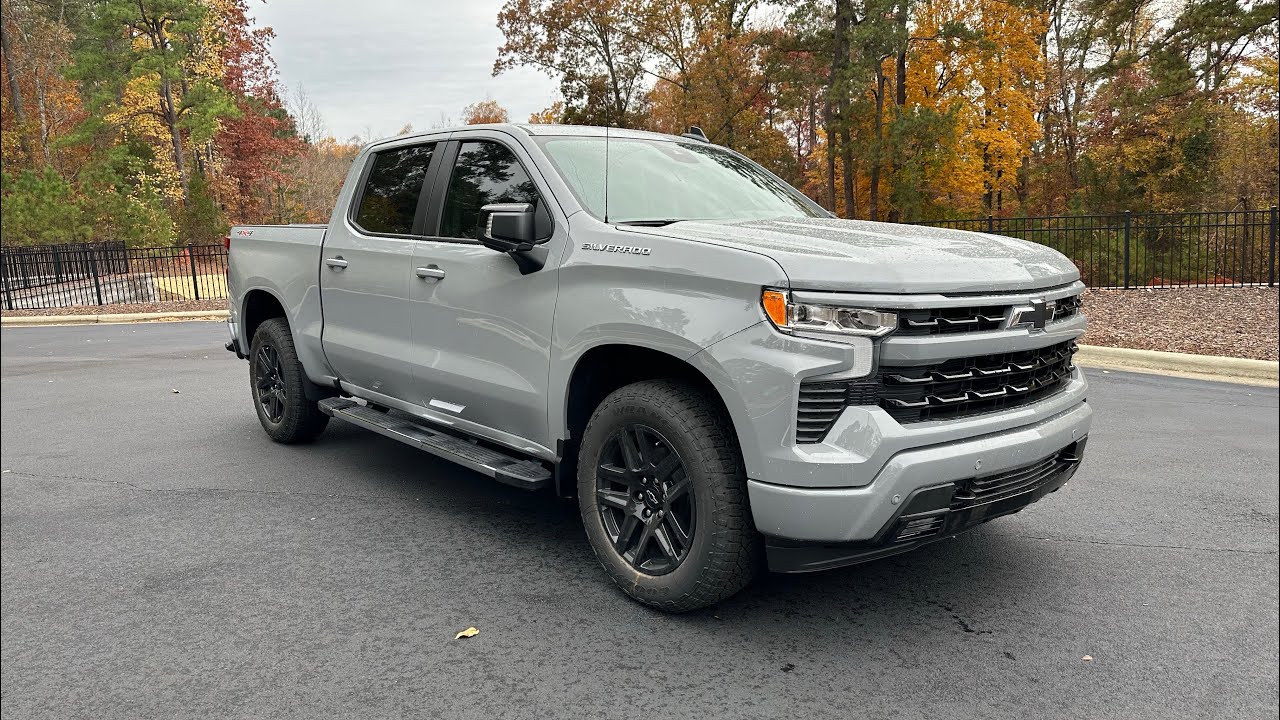
5. Chevrolet Silverado 1500 (Non-Z71 Models)
The Chevrolet Silverado 1500 in its standard, non-Z71 form is a capable full-size pickup for everyday work and hauling but struggles significantly when confronted with demanding off-road conditions.
Unlike its Z71 counterpart, which includes factory off-road enhancements such as upgraded shocks, skid plates, and electronic locking differentials, the base Silverado is equipped with a suspension and drivetrain designed primarily for highway comfort and moderate utility.
Its suspension components, including conventional coil springs and a non-reinforced frame, provide limited wheel articulation and ground clearance, restricting the truck’s ability to navigate rough, uneven terrain without risking damage.
The lack of off-road tuned shocks means that impacts from rocks, potholes, and uneven surfaces are transferred more directly to the chassis and passengers, increasing the likelihood of structural damage and occupant discomfort.
Under the hood, the Silverado 1500 offers a range of engines, including V6 and V8 options that provide strong power and torque for towing but do not always translate into effective low-speed off-road control.
Without specialized off-road features like crawl control, selectable terrain modes, or locking differentials, the standard Silverado struggles to maintain traction on loose surfaces or steep inclines.
The absence of these advanced systems means that drivers must rely heavily on manual throttle modulation and careful driving techniques to avoid getting stuck or damaging the vehicle. Additionally, the factory tires are typically designed for road use and lack the aggressive tread patterns needed for reliable off-road grip, increasing the chances of slipping and punctures.
Durability on the trails is another area where the non-Z71 Silverado falls short. The lack of extensive skid plating leaves the oil pan, transfer case, and fuel tank vulnerable to impacts from rocks and debris, potentially leading to leaks or mechanical failures.
The suspension and frame components are not heavily reinforced, resulting in an increased risk of bending or cracking when subjected to the repeated stresses of off-road driving. Owners often report accelerated wear on bushings, ball joints, and suspension mounts after even moderate off-road use, which can lead to expensive repairs and downtime.
Without protective rock rails, the Silverado’s body panels are prone to dents and scratches, further reducing the truck’s ability to withstand repeated beatings.
Overall, the standard Chevrolet Silverado 1500 is not built to survive harsh off-road conditions without significant modifications. Its comfort-oriented suspension, limited protective features, and lack of off-road driveline technology mean it snaps under pressure when the terrain becomes truly challenging.
While it excels as a workhorse on pavement and light trails, it is not a truck designed to endure the extreme rigors of serious off-road adventures.
Also Read: 5 Cars With Zero Depreciation Over 5 Years and 5 That Drop Instantly
The landscape of off-road trucks is a dynamic intersection of engineering innovation, rugged capability, and real-world demands. This exploration of five trucks that endure off-road beatings and five that tend to snap under pressure underscores the critical factors that define off-road reliability and resilience.
In essence, surviving off-road conditions requires more than just raw power or a flashy exterior—it demands a thoughtful combination of durable design, reinforced components, adaptive traction systems, and protective measures that guard vital parts against the constant hazards of harsh terrain.
Trucks that survive off-road beatings consistently share several key characteristics. They are built on strong, reinforced frames that resist twisting and bending under stress. Their suspension systems offer long travel and robust shock absorption, enabling the wheels to maintain contact with the ground for maximum traction.
They feature advanced drivetrain technologies such as locking differentials and terrain management systems that intelligently distribute power where it’s needed most. Additionally, comprehensive underbody protection like skid plates and rock sliders safeguards critical mechanical parts from damage.
These trucks are engineered not just to handle occasional off-road jaunts but to withstand prolonged, severe use while minimizing mechanical failures. Their reputation for toughness is backed by years of testing, both in factory development and in the hands of dedicated off-road enthusiasts who push these vehicles to extremes.
Conversely, the trucks that snap under pressure frequently reveal fundamental design shortcomings or compromises made for cost savings and urban appeal. Aging suspension architectures with limited articulation, insufficient ground clearance, and lack of protective armor make these trucks vulnerable to physical damage from rocks and uneven surfaces.
Drivetrains not optimized for low-speed torque or lacking modern traction aids struggle to maintain grip and control in difficult conditions, increasing mechanical stress and the likelihood of component failures. Even if these trucks perform admirably on paved roads or light trails, their structural and mechanical vulnerabilities become glaring liabilities when subjected to true off-road demands.
Their failures often translate into unexpected breakdowns, costly repairs, and dangerous situations that could have been avoided with a more capable vehicle choice. Beyond the technical considerations, this comparison highlights an important lesson for anyone considering a truck for off-road use: off-road capability must be evaluated holistically.
Buyers should carefully assess not only the advertised features but also the engineering depth, quality of components, and real-world durability track record. Investing in a truck known to survive off-road beatings saves money, time, and frustration down the line, while also ensuring safety and confidence in remote or challenging environments.
For those willing to push boundaries, the difference between a truck that can absorb punishment and one that breaks under pressure is a decisive factor in the success of their adventures.
Moreover, the culture of off-roading prizes resilience, adaptability, and preparedness. Vehicles that endure off-road beatings become more than machines—they become trusted partners in exploration and discovery.
Whether tackling steep inclines, deep mud, or rocky passages, these trucks demonstrate that durability and smart design are paramount. On the other hand, trucks that falter serve as cautionary examples, reminding us that rugged appearance alone is not enough to guarantee off-road success.
In closing, understanding which trucks thrive and which falter under off-road conditions is essential for anyone serious about venturing beyond pavement. By choosing trucks engineered to withstand the rigors of off-road use, drivers empower themselves with tools that offer both capability and peace of mind.
Whether navigating a remote trailhead or escaping the confines of the city, selecting the right truck can transform the off-road experience from a potential ordeal into an exhilarating journey of confidence and capability.
As this article has demonstrated, the difference between trucks that survive and those that snap under pressure is not merely a matter of preference—it’s a matter of engineering, design, and respect for the demands of the trail.

